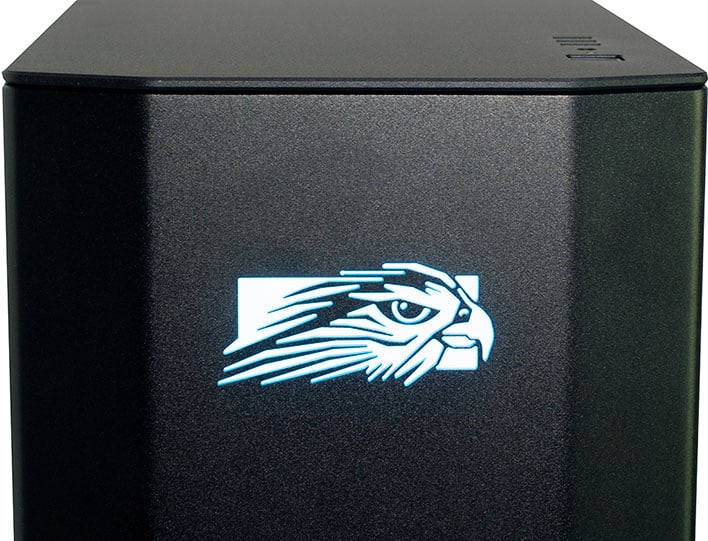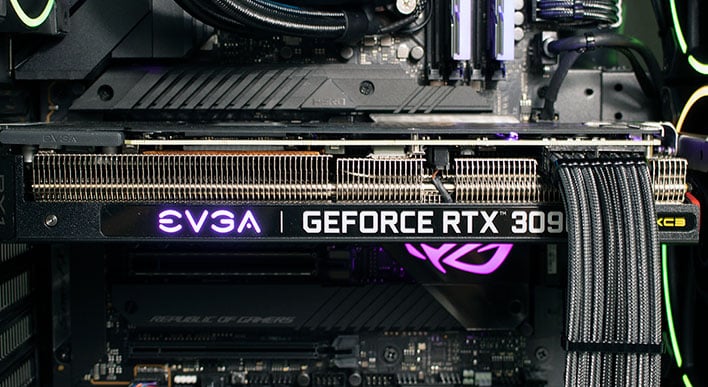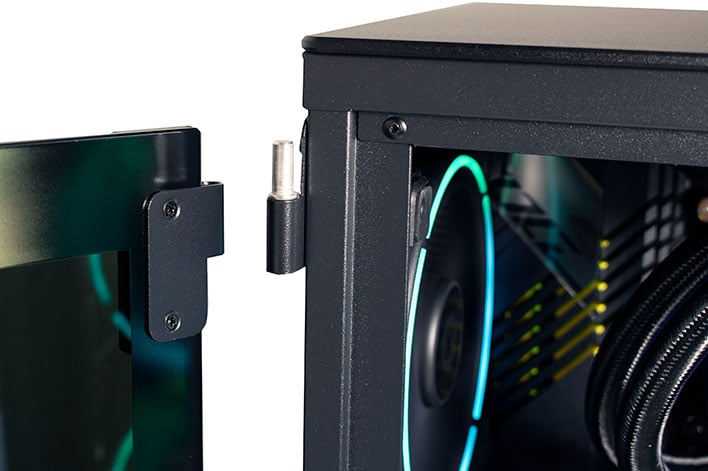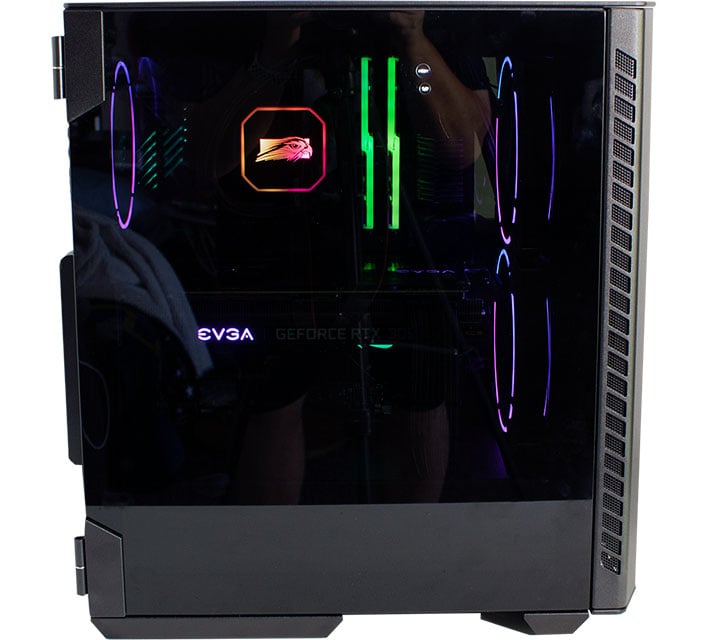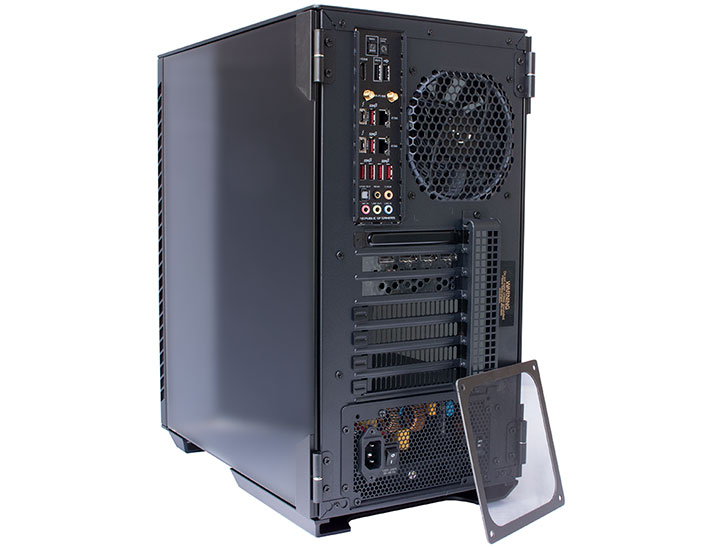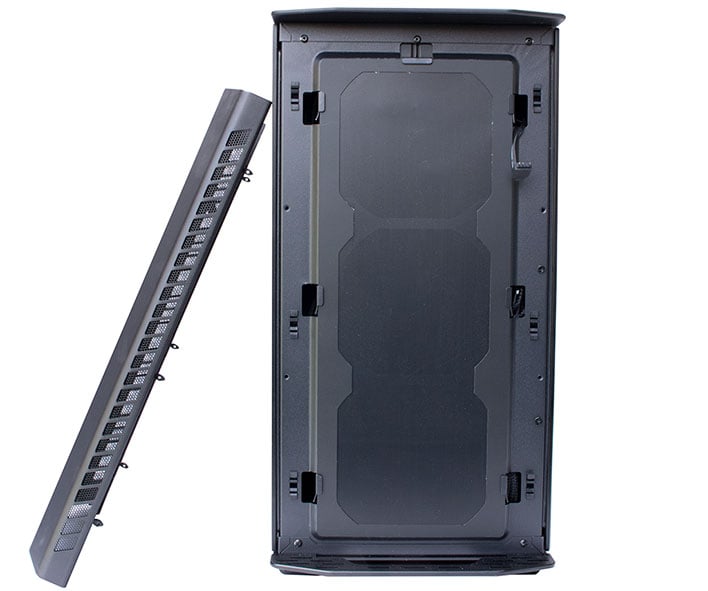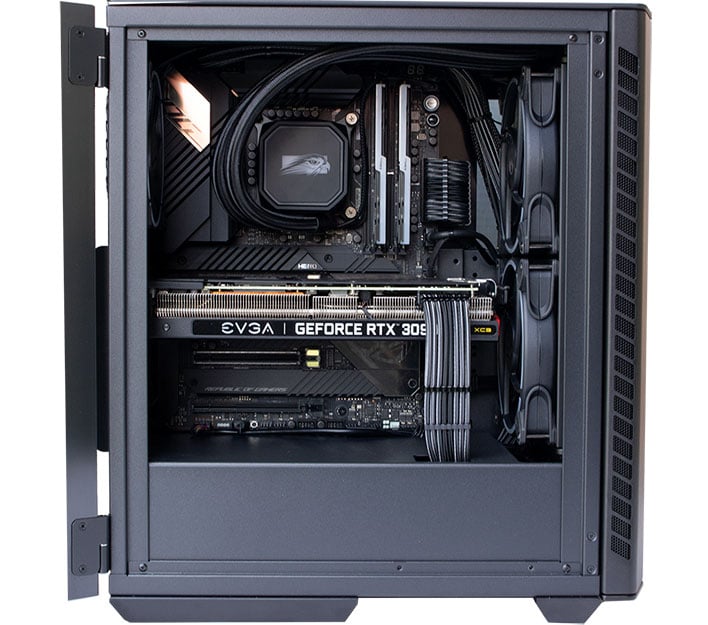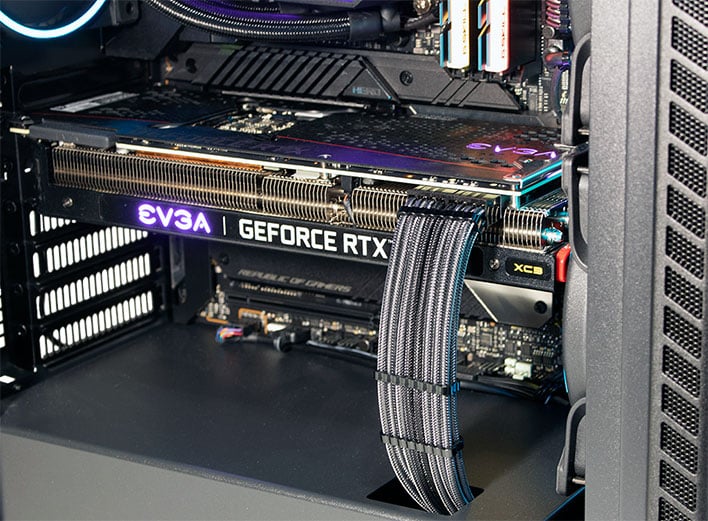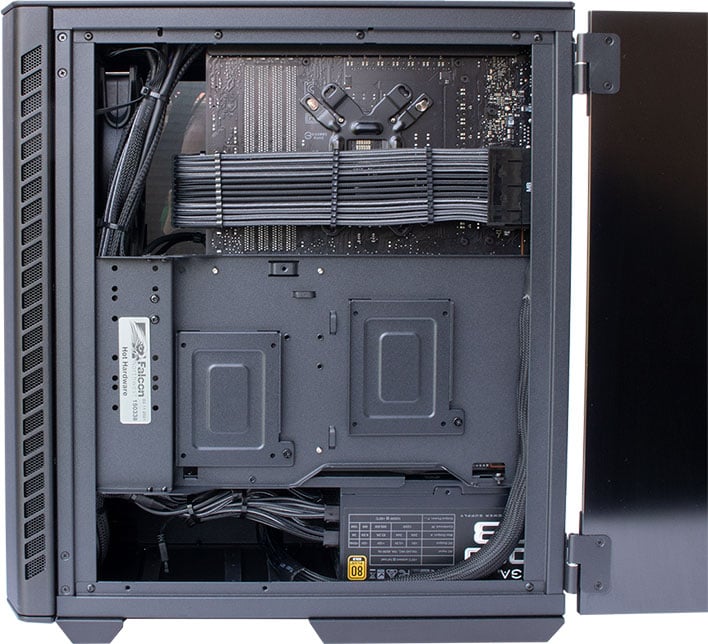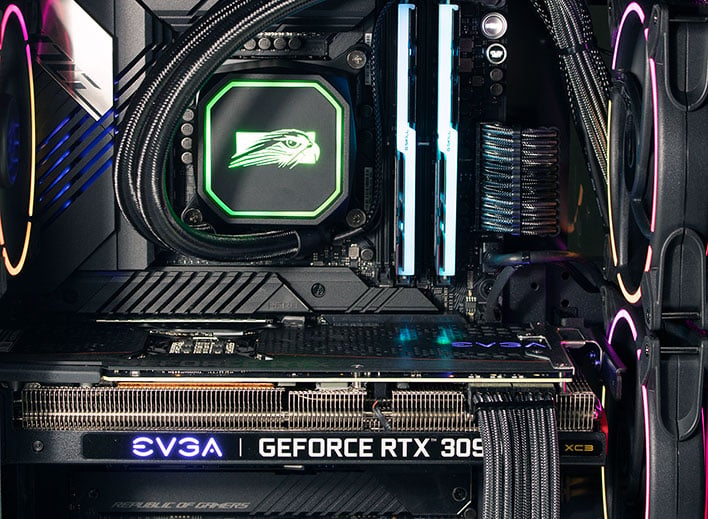Falcon Northwest Talon Review: Killer Bird Of Prey Gaming PC
Falcon Northwest Talon (2021): A Rocket Lake-S Fueled Luxury Gaming PC
Even if you have never owned one, because of the long-standing boutique quality of their systems, there is a good chance you have heard of Falcon Northwest. Falcon Northwest is one of the earliest and now most well-known boutique system builders around. If I can break from the "royal we" for a moment, Falcon Northwest was a brand I have lusted after for decades, but never allowed myself to purchase, for the same reason I do not own a Ferrari. It's fast, it's sexy, but a Honda Insight, while not as flashy, is closer to my income level. Life choices and what not.
Just as Ferrari offers no apology for charging a premium for its sports cars, Falcon Northwest is happily content to hang out solely in the premium PC space. Or as the company's founder Kelt Reeves told us, "Nobody's ever accused of us being budget." That includes the latest iteration of the Talon, a mid-tower setup that is now available with Intel's 11th Gen Core 'Rocket Lake-S' CPUs. And that's precisely what Falcon Northwest sent in for review: a fully loaded Rocket Lake-S configuration built around Intel's flagship Core i9-11900K processor.
If you were to purchase this same setup, Falcon Northwest would install either a Core i9-11900K or Core i9-11900KF, whichever is more readily available. You can instruct the company to only go with one or the other (pricing is the same either way), but doing so "may extend lead times well beyond" whatever the estimated ship date ends up being. Welcome to 2021, folks.
As far as we are concerned, this is an acceptable approach to a less than ideal situation. There's just a $26 difference in Intel's recommended customer pricing (RCP) between the two top slices of silicon, and the only tangible difference in the hardware is whether it includes functioning onboard graphics (Core i9-11900K) or if the iGPU has been disabled (Core i9-11900KF). Otherwise, the cores, the threads, the clocks, the cache, and so forth are all identical.
The other, less expensive option is a Core i7-11700K, which is $400 cheaper. Note we did not say "cheap," because to fly a Talon out of Falcon Northwest's hangar, you're looking at spending just shy of $3,700 for the base configuration. How far north depends on what level of computing luxury you are after. The setup we received costs $5,799. Here is what it includes...
| Falcon Northwest Talon (2021) |
|
| Processor | Intel Core i9-11900K (8 cores, 16 threads, 16MB L3 cache, 3.5GHz to 5.3GHz) |
| Cooling | Falcon Northwest all-in-one liquid cooler (280mm radiator) |
| Memory | 32GB (2x16GB) G.Skill Trident Z RGB DDR4-3200 |
| Motherboard | ASUS ROG Maximus XIII Hero (Intel Z590 chipset) |
| Graphics Card | EVGA GeForce RTX 3090 w/ 24GB GDDR6 |
| Storage | 2TB Samsung 980 Pro M.2 NVMe Gen 4 SSD |
| Networking | Intel Wi-Fi 6E (Gig+) w/ external antenna (motherboard) Dual Intel 2.5-Gigabit Ethernet (motherboard) |
| Power Supply | EVGA SuperNOVA G3 1000W (80 Plus Gold) |
| Enclosure / Lighting Options | ASUS Aura Sync |
| Operating System | Windows 10 Pro |
| Ports (Rear) |
6x USB 3.2 Gen 2 Type-A (10Gbps) 2x USB 2.0 Type-A 2x Thunderbolt 4 (USB-C) w/ 5V/3A 15W charging 2x Intel I225-V 2.5Gb Ethernet 1x S/PDIF (optical) 1x HDMI 2.0 (motherboard) 1x HDMI 2.1 (GPU) 3x DisplayPort 1.4a (GPU) 1x ASUS Wi-Fi module 1x BIOS FlashBack button 1x Clear CMOS button |
| Ports (Front) |
2x USB 3.0 Type-A (5Gbps) 1x USB 3.1 Gen 1 Type-C (5Gbps) 1x 3.5mm headphone/line-out |
| Dimensions | 8.75 x 15.5 x 17.25 inches (W x D x H) / 222.3 x 393.7 x 438.2 millimeters |
| Maximum Weight | 42 lbs (19.1 kilograms) |
| Warranty | 3 years parts and labor |
| Pricing | As tested $5,799 - Falcon-nw.com |
The priciest part of the system we tested, and also the crown jewel for gaming, is the EVGA GeForce RTX 3090 graphics card. On the consumer side, this is the highest end version of NVIDIA's Ampere GPU architecture. Falcon Northwest decided on this configuration because it wanted to showcase a Rocket Lake build at its best, pairing it with a top shelf graphics card, blazing fast PCIe Gen 4 SSD storage (2TB Samsung 980 Pro), and Thunderbolt connectivity.
To that end, the ASUS ROG Maximus XIII Hero motherboard should not be overlooked either. It's decked out with all the bells and whistles, like Wi-Fi 6E, dual 2.5Gb LAN ports, and premium components to facilitate overclocking. In a do-it-yourself (DIY) build, this part alone would pluck $500 from your money clip. If you want to save a few bucks on the Talon, opting for the ASUS ROG Strix Z590-E Gaming trims $102 off the tally.
Both motherboard options are based on Intel's Z590 chipset, designed to take full advantage of Rocket Lake. That includes native PCI Express 4.0 support, improved connectivity, and a few other enhancements over Z490.
Touring the Talon
At a glance, the Talon appears unchanged from when Falcon Northwest redesigned the custom chassis in 2019 for its 20th anniversary. We reviewed an AMD-powered Talon back then and came away impressed with the overall build quality and attention to detail, and of course the top shelf parts worthy of a dream PC.
While it may look similar, there are several key changes to the newest iteration. One that Falcon Northwest is particularly proud of is a re-tooling of the hinges. We're told the company spent $11,000 reworking the hinge design, all because an editor pointed out that paint was not adhering to the old design all that well. The lofty investment underscores Falcon Northwest's obsession to luxury styling and detail—if you're plunking down several grand for a PC, a minor annoyance can be a major turn-off.
It also highlights the flexibility afforded to Falcon Northwest by designing its own case. By skipping off-the-shelf enclosures for its own design, the boutique builder puts itself in a position to continually tweak and refine them, rather than be bound by what case makers have available any moment in time.
The chassis is slightly on the wide side for a mid-tower, which Falcon Northwest cleverly disguises with an angled front panel. It gives the illusion of a narrower frame, and we only noticed the width after staring at the build for a very long time. The cutout logo of a falcon on the front also diverts the viewer's eyeballs, and gives the Talon some visual flair. Same goes for the RGB lighting that pours through, though for a nominal charge ($13), Falcon Northwest will swap it out for a gold, silver, or copper plate.
This is a metal chassis, with 4mm thick aluminum plating that has been sand blasted for a slightly textured feel. Along with the matte black finish, it does a mostly good job at resisting fingerprints. Alternatively, Falcon Northwest will happily splash your build with custom UV prints on the front panel, the side panel (including the glass side panel), or all around. We're not just talking about different colors, but complete themes, if you have the requisite coin, like the bodacious Ultima-themed Talon the company built for Richard Garriott (aka, Lord British).
We did not opt for a paint job, because we wanted to see the system how most people will receive it—with tinted glass side panels on both sides. That's the default option, though you can also select solid aluminum panels ($30 extra), or have Falcon Northwest ship both ($80 extra), in case you want to change things up from time to time. And if you'd like a clear glass panel for an unobstructed view of the interior, you can request one, though Falcon Northwest tells us it's a "be careful what you wish for proposition," because without a custom UV print applied, it can show off things you might not want to see, like the adhesive that holds the magnetic strip for the door. But it's an option. We must admit, though, the tinted glass works well with the RGB lighting.
The top of the case is flat and wide—a good resting place for objects, if you're not worried about scratching it up. For our test build, we positioned the external Wi-Fi antenna on top. As for the I/O situation, there are two USB 3.0 Type-A ports (5Gbps), a USB 3.1 Gen 1 Type-C port (10Gbps), and a 3.5mm audio jack. There's also a storage activity LED and an and LED-lit power/reset button.
There are a lot more ports on the back, courtesy of the motherboard and GPU. That includes half a dozen USB 3.2 Gen 2 Type-A ports (10Gbps), dual 2.5-Gigabit Ethernet ports for wired connectivity, two Thunderbolt 4 ports, and various other connectors. You'll also find two separate (and handy) Clear CMOS and BIOS FlashBack buttons. The latter would normally come in useful when installing a newer generation processor that is not supported by the current BIOS, though in this case, Rocket Lake is the end of the line for Intel's LGA 1200 socket.
Hidden from view is magnetic air filter that sits underneath the chassis. This is accessible by reaching your fingers under the case from the back, and then just pulling it off and out. A nice amenity that makes periodic maintenance a cinch.
Another larger and longer air filter sits behind the front panel. It's easy enough to pop the panel off—we found the best method is to grip both sides of the front panel and gently pull as you press your thumbs on the top lip. If you go too fast, as we did, the cable connecting the front RGB lighting will detach. Fortunately, it takes minimal effort to reattach it.
The front panel is also notable for the vented cutouts on the both sides. This allows the front fans to pull cool air in from the outside. Does it work? Well, without the aid of a thermal imaging camera, we stuck our hand in the case from time to time and were never concerned with the heat buildup, or lack thereof. We'll get more into the cooling in a moment, though.
Falcon Northwest Talon Interior Design
Regarding the $11,000 hinge design that Falcon Northwest fancies so much, it does make getting inside the Talon super easy. There are no thumbscrews to remove, just reach under the bottom lip and pull it open. You need not worry about the side panels swinging open by themselves, as magnets do a good job holding them shut. And if you're performing major surgery on the Talon—swapping out the motherboard, for instance—it takes minimal effort to lift the side panel off completely. It's just a well thought-out design.
As you might expect from a luxury priced PC (or demand, really), the cable management is neat and tidy. Most of the wiring that is visible in the case is braided and black, the latter of which helps hide them from view behind the panel's tint.
Falcon Northwest says this is more labor intensive than it may seem, as it requires cutting the cables to length and hand-threading them. The company also tapped the folks at CableMod to provide bridged power connections to the graphics card, for what amounts to a single 16-pin connector instead of two 8-pin connectors. Falcon Northwest even modded the power supply shroud to facilitate a waterfall aesthetic, which is a fancy way of saying the cabling bows before slipping through the PSU shroud cutout and out of sight.
To accomplish such a clean layout in a DIY build, a common trick is to just stuff the excess wiring behind the motherboard tray and then force the case shut, come hell or high water (like those cartoons where a character pounces on an overfilled suitcase). Not here, though.
The right side of the build is nearly as immaculate. Unfortunately, the tint prevents showing off the cleanliness behind the motherboard tray, which is another argument in favor of offering clear glass as an option, for those who want it. Or maybe just an RGB light strip to provide some luminance. Regardless, the folks who build these systems clearly put a lot of time and elbow grease into shipping uncluttered PCs, as it shows in the finished product.
We also appreciate the laser-etched nameplate. It contains the customer's name (you could probably request a custom message or nickname), the build date, and serial number, along with the company's logo. It's a minor thing, but those sort of personalized touches are what separate bulk builds from custom boutique systems.
Let's talk about the cooling, shall we? Falcon Northwest upgraded the all-in-one liquid cooler from the one that was included in the 20th anniversary build. The RGB pump and water block assembly is big enough to engulf a large Ryzen Threadripper processor, while still working just fine on smaller CPUs, like the Rocket Lake chip in our build.
It's a custom cooler only available in the Talon, with a 280mm radiator and dual 140mm variable RPM fans with RGB lighting. There's also a 140mm RGB fan in the rear of the case that serves as the exhaust, and three more fans on EVGA's custom cooled GeForce RTX 3090 graphics card.
The cooling scheme does a good job at battling the heat, which is even more important with the Core i9-11900K and Intel's Adaptive Boost technology. Adaptive Boost aims for 5.1GHz on all eight cores, with Intel allowing a toasty 100°C threshold to coax that level of speed from the CPU.
That said, we'd like to see Falcon Northwest offer more cooling options, specifically a custom liquid cooling loop with hard-line tubing. Unlike an AIO cooler, there is occasional maintenance required with a custom liquid cooling setup. But when done right, it looks fantastic and offers excellent heat dissipation. It's a seemingly odd exclusion from a boutique builder of Falcon Northwest's caliber, and the reason for its twofold. First, Falcon Northwest tells us it isn't comfortable with a custom liquid cooling setup arriving safely. Indeed, we've experienced this fear in the past, where a high-dollar, liquid-cooled PC sprung a leak during shipping, and it wasn't pretty. Secondly, Falcon Northwest feels its clientele want the benefit of a luxury PC without the chore of ongoing maintenance, as a custom loop would require. We'd still like to see it as an option, but we get where the boutique is coming from. And as Falcon Northwest points out to us, "closed loop cooling gives 90 percent of the benefit without the maintenance and leak possibilities." Fair enough.
In any event, the cooler that Falcon Northwest does use is up to the task. Intel's aggressive core boosting has the potential to make some systems run loud, but the Talon manages to avoid that, as we'll discuss on the next page...

